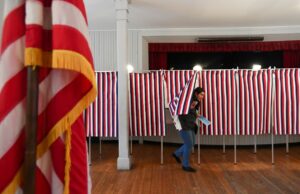How Younger Voters Will Impact Elections: The Gender Gap
Originally published by Elaine Kamarck and Michael Hais for Brookings
A funny thing happened slightly more than 40 years ago. In the 1980 presidential election, pollsters and politicians alike noticed that women were more likely to vote for the Democratic candidate, incumbent Jimmy Carter, than to vote for the Republican Ronald Reagan. In 1976, when Jimmy Carter defeated Gerald Ford, men and women were the same in their partisan preferences. But in 1980, the gap was nine points. Although this gap has been smaller in some elections than in others, for the past half century the gender gap has been a regular feature of American elections. The gender gap was 12 points in 2020, with 57% of women preferring Biden compared to 45% of men. Now, election results from last year’s midterms suggest it may be disappearing among younger voters.
As we have done in other articles in this series, we divide the electorate into two groups — those under 45 years of age and those over 45 years of age.[1] As the first graph illustrates, younger white men prefer Democrats in about the same percentages as do younger white women — 55% to 52%. However, among older Americans the gender gap is ten points — only 31% of white men prefer Democrats, whereas 41% of white women do — numbers that are more in keeping with those we’ve seen in the past 50 years.
Among African Americans there is virtually no gender gap in either age group, as Graph 2 shows. This is not surprising given the strong bonds between African Americans and the Democratic party.
The Hispanic gender gap looks more like that of white voters with a considerable gender gap among older voters but no gap among younger voters.
Why the absence of a gender gap among younger voters? Abortion is probably a big reason — like their female partners, men under 45 years old grew up under Roe v. Wade. Historically men’s and women’s views on abortion have not differed dramatically.
But there are likely more fundamental reasons. Since the 1950’s, 1960’s and 1970’s, when today’s older generations were in their formative years, America’s culture has changed markedly. Today, little girls can more realistically aspire to graduate from college or graduate school and hold such traditionally “male” occupations as soldier, police officer, lawyer, and doctor, and men’s presence in some traditionally “female” occupations, such as nursing, is becoming more common.
